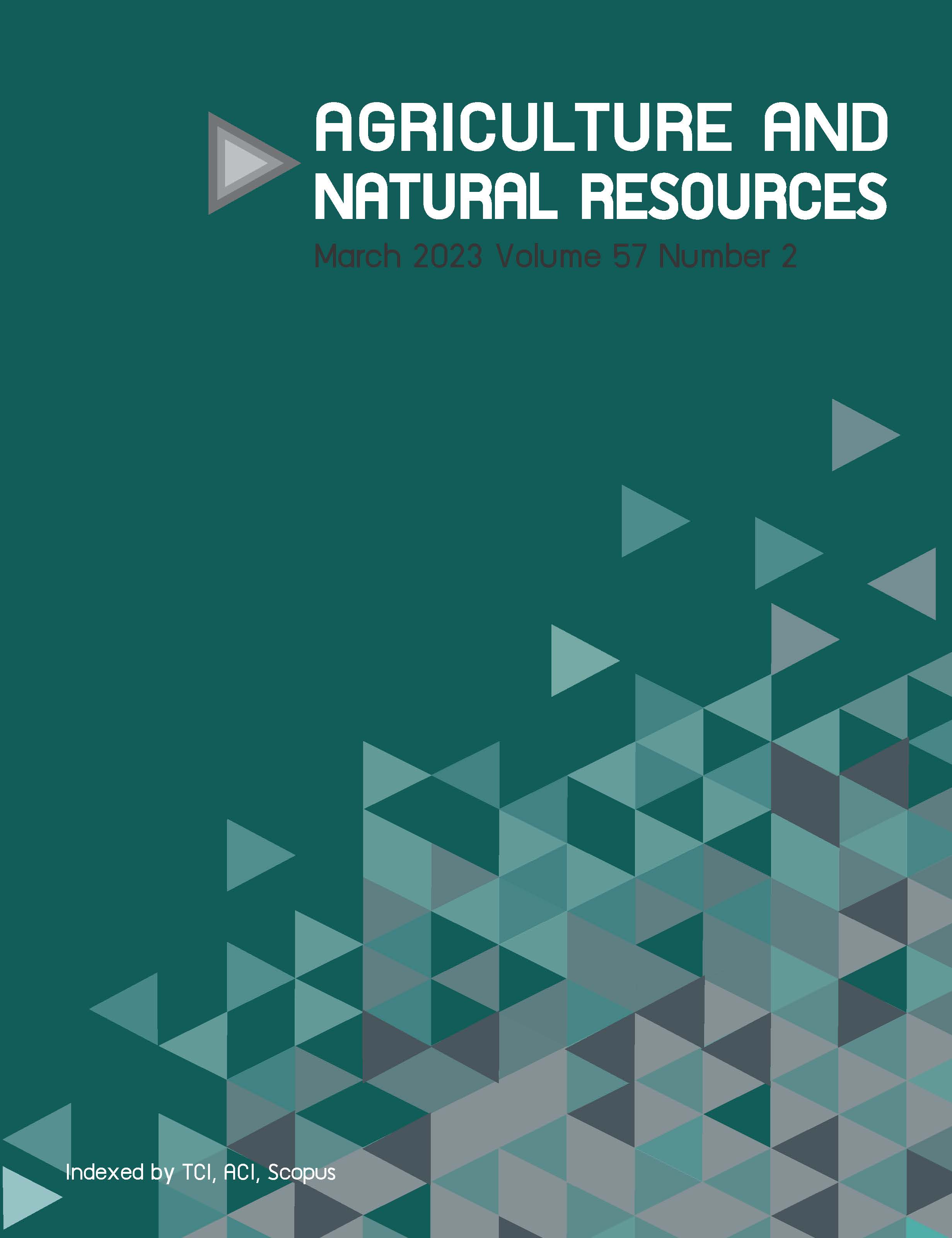Biomass productivity and wood chemical composition at different pruning ages of interspecific hybrid Jatrophas
Keywords:
Calorific value, Fast-growing tree, Jatropha curcas, Jatropha integerrima, Wood qualityAbstract
Importance of the work: Interspecific hybridization has the potential to increase the biomass yield of Jatropha hybrid varieties.
Objectives: To assess the biomass yield and wood chemistry composition of interspecific hybrids between Jatropha curcas and J. integerrima; to evaluate the effect of pruning ages on biomass yield; and to investigate the relationships between the calorific value and chemical composition in the wood of the Jatropha hybrids.
Materials & Methods: In total, 16 genotypes of interspecific hybrids, parental species and a variety commonly found in Thailand were field planted for testing; their pruned biomass yields were harvested for assessment at three different ages.
Results: The pruning age of the Jatropha hybrids influenced their wood biomass yield, chemical composition and calorific value. With increasing pruning age, the hybrids tended to have higher biomass yield, lignin content and wood calorific value. Variability among genotypes was found in all the traits studied. The biomass potential of interspecific hybrids was greater than that of the parent species. The hybrids outperformed J. curcas in terms of biomass yield, moisture content, wood density, chemical composition and calorific value. The interspecific hybrid KUBJL 14 had the greatest potential for biomass production. Furthermore, the correlation coefficient (r) averaged across pruning ages indicated highly significant (p < 0.01) relationships between the calorific value of wood and its lignin (r = 0.70), lignocellulose (r = 0.74), ash (r = -0.92) and moisture (r = -0.80) contents and its density (r = 0.50).
Main finding: The pruning age had positive effects on wood biomass yield, chemical composition and calorific value of Jatropha. The wood traits with a significant correlation with calorific value were identified and could be used to improve wood quality in a Jatropha hybrid breeding program.
Downloads
Published
How to Cite
Issue
Section
License
Copyright (c) 2023 Kasetsart Universityonline 2452-316X print 2468-1458/Copyright © 2022. This is an open access article under the CC BY-NC-ND license (http://creativecommons.org/licenses/by-nc-nd/4.0/),
production and hosting by Kasetsart University of Research and Development Institute on behalf of Kasetsart University.







